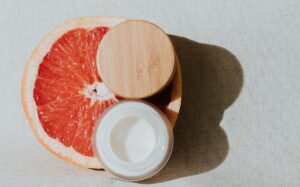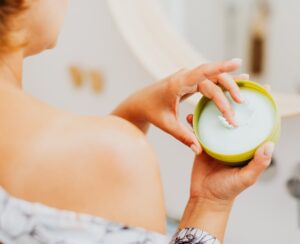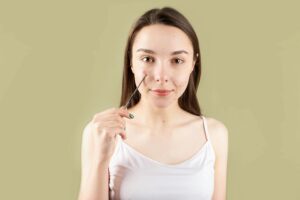You’ve probably heard of the skin cycling routine—a viral TikTok trend. It’s a customized approach to skincare that involves rotating between active ingredients on some nights and hydrating or recovery ingredients on others. In this article, we’ll dive into what skin cycling is, why it’s so popular, whether you should try it, and how to do it properly.
Table of Contents
What is skin cycling
Recently, skin cycling has become very popular in skincare routines due to its strategic approach. It involves using active ingredients on certain nights and focusing on recovery on the others. This method has the potential to help you get the maximum benefit from your skincare while avoiding adverse effects.
How to do skin cycling routine
Skin cycling is basically a four-night routine: on the first night, exfoliation of the skin is done with the use of AHAs and BHAs; on the second night, retinoids are applied—could be any one according to what you are using in your specific skincare routine, either prescription-strength tretinoin or gentle retinol; and on the third and fourth nights, hydrating and barrier support products are used. So this makes it one cycle. Also, you can go on for as many cycles as you want. Typically, people have seen good results after just 4-5 cycles.
By following this kind of skin cycling, you’re essentially minimising the irritation that often comes with using retinoids and exfoliating ingredients. This method is especially helpful for people with sensitive skin or those who get easily irritated by exfoliation or retinoid use.
Skin cycling benefits
The benefit is definitely minimizing irritation of the skin that often comes with the use of retinoids and exfoliating ingredients. These are often used on the same day—retinoids at night and exfoliating ingredients in the morning—so we’re not giving enough time for our skin to adjust to the actives. That’s why we often see sensitivity in the skin. With the skin cycling approach, there is less irritation because we are spacing them out, and on the third and fourth days, we are totally and mainly focused on skin barrier repair and hydration.
If you have textured skin—like acne scars, enlarged pores, and bumps—then using this type of approach, which includes exfoliating ingredients on one night solely focused on removing dead skin, can help. With time and after a few cycles, the texture of the skin is greatly improved.
Skin cycling also helps in minimizing the frequency of breakouts. I personally found this approach to be very effective in minimizing acne breakouts. I used to get acne breakouts even though my skincare routine was amazing or top-notch—but I still got them once in a while. I noticed that with this type of approach, I’m not getting breakouts as frequently. This is, of course, because you’re exfoliating and basically taking the gunk out of your skin. If you’re someone who goes out every day, has a job, wears makeup regularly, and applies sunscreen daily, this kind of exfoliation and skin cycling is very important to keep your skin clean.
Another benefit I’ve seen with this type of approach is that, in a typical daily skincare routine, we mainly focus on actives, targeted serums, and treatments—we pay a lot for them—but we don’t give as much attention to skin barrier support and hydration. With this approach, we’re actually giving more time to barrier repair and hydration, which is a total game-changer. The skin barrier is what really matters when it comes to achieving healthy skin. This customized skin cycling routine dedicates two days specifically to barrier support and hydration, making it a very strategic and effective method for maintaining overall skin health.
Who can use the skin cycling routine?
Skin cycling is very good for people who are beginners to actives, those with sensitive or reactive skin, or those with uneven tone. You should avoid this skin cycling routine if you have rosacea flare-ups or if you have an active breakout. Let your skin calm down first, and then you can start using this routine. This is a very good approach for acne-prone skin, sensitive skin, and for beginners who are very prone to irritation caused by actives. Skin cycling is getting a lot of hype for a reason: it has shown results. I personally use it and can definitely see improvements because of its benefits. My hyperpigmentation is fading with the regular use of exfoliation and retinoid application, while keeping my skin barrier intact.
FAQs
Do dermatologists recommend skin cycling?
Yes, dermatologists highly recommend skin cycling — and for good reason. It’s a gentle yet effective method to introduce actives without overwhelming your skin. Interestingly, the term skin cycling was actually coined by the renowned dermatologist Dr. Whitney Bowe.
How long does it take to see results from skin cycling?
Based on my personal experience, I’ve seen good results after just 4-5 cycles. I can literally see my scars fading away. My skin is healthier than before. During this one month, I haven’t experienced any irritation, which I usually get with the use of retinoids. With this kind of approach, it typically takes about 5 to 6 cycles to notice any notable difference.
Maleeka is an orthodontic resident with a passion for skincare and beauty. She decodes beauty products, breaks down ingredients, and spills the tea on marketing hypes. When she’s not perfecting smiles or geeking out over the latest formulations and trends, you’ll find her binge-watching Netflix.




